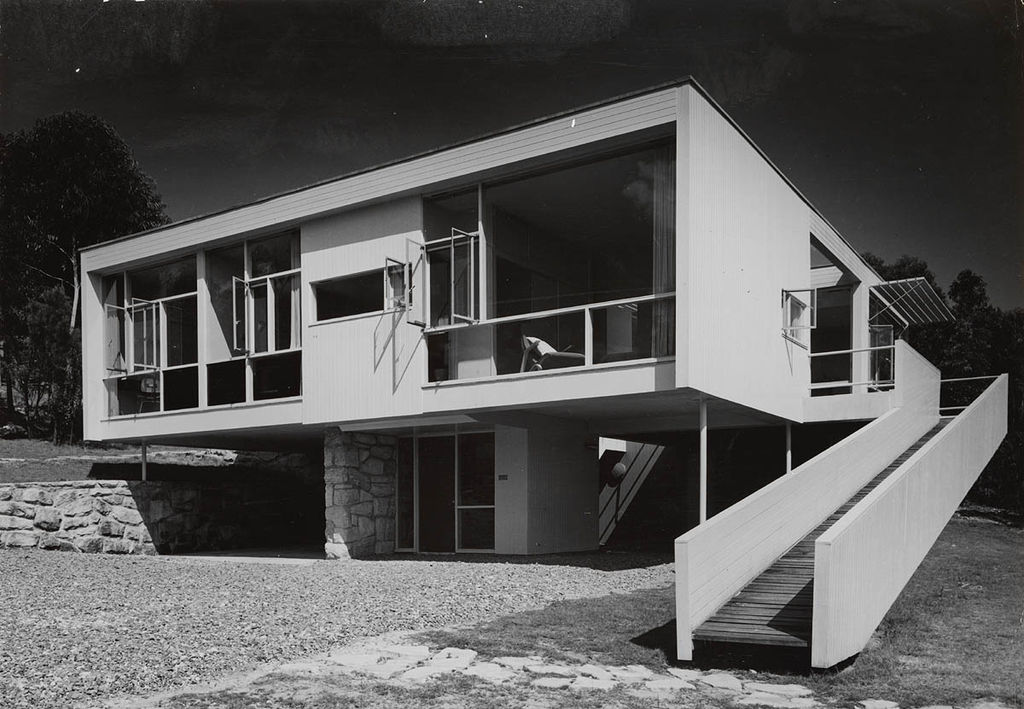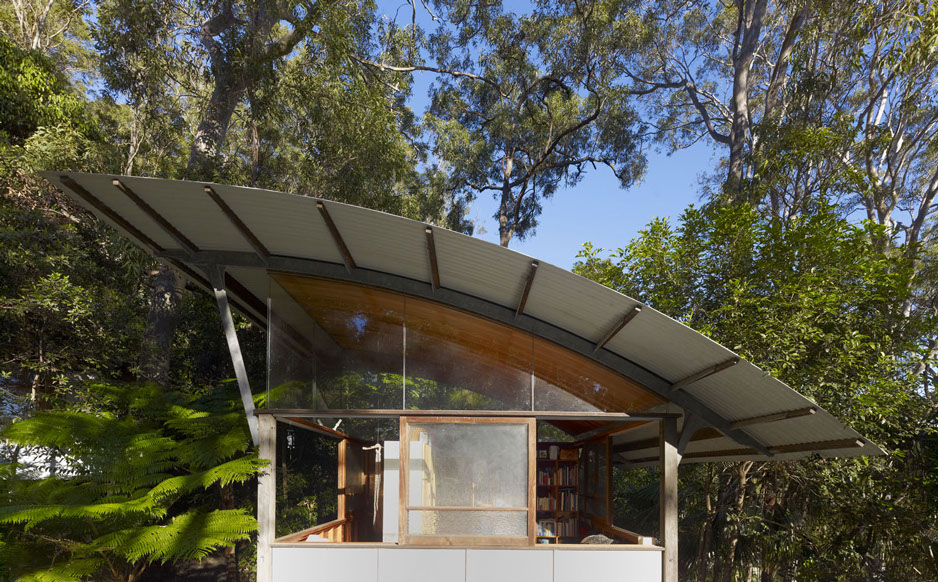When did modern start meaning massive?
Some of the best examples of modern architecture in Australia – houses built in the Fifties and Sixties – are small and modest by today’s standards. Two or three bedrooms – with no room for lounging – one bathroom, and maybe an extra toilet if you were lucky.
The Rose Seidler House, the Buhrich House; Roy Grounds’ own house; Peter McIntyre’s Butterfly House. Post-war austerity partly accounted for the size, but it was more than that – those were much more frugal times in general, and sharing was considered part of life. Not enough space for a bedroom each – some kind of partition would do. Several members of the family using one bathroom – an opportunity to learn valuable lessons about being sensitive and considerate.
Something happened around 30 years ago; maybe it was brilliant marketing on the part of bath and basin manufacturers, but it suddenly became necessary for pretty well each member of the family to have their own bathroom. Who knows what that’s done to society – people talk about the alienation caused by mobile phones and computers, but you’d have to wonder whether houses with multiple bathrooms, where the occupants are never told to hurry up, have anything to do with it? We know that modern architecture is a force for good in this world, but the most extravagant forms could also be considered a bad influence.

A question of size
On the subject of extravagant, one of the accepted truths in life is that as people become richer they buy bigger houses. That’s not limited to modern times or modern architecture – it’s probably been happening since the invention of money.
It’s something that’s always seemed odd and unnecessary – even if you have an extra few million in your bank account, you’re still exactly the same person; do you really need several extra bedrooms and a living room the size of a school assembly hall?
The ability to lash out on larger places is not just for the wealthy these days; it’s well known that Australians live in some of the biggest houses on the planet. Since 1950, our homes have more than doubled in size; 60 years ago, the average Australian house was 100 square metres; now it’s 240 square metres. At the same time, fewer people are living in those houses – the average floor area per person used to be 30 square metres; it’s now 87 square metres.

Drive through many older middle class suburbs in Australia’s cities and well-built, perfectly liveable, houses will have been bulldozed to make way for overblown piles – we may just write a whole entry on the subject before too long, but let’s just say it seems crazy that local authorities are allowing such unsustainable practices to occur.
Apart from anything else, huge houses and massive rooms are incredibly difficult to furnish, and are not scaled for humans – the mere size of them makes them uncomfortable. ‘Homely’ might seem like an overly moderate word, but at its best, it means nurturing, relaxing and comforting, which is exactly what most people would want from where they live, you’d like to think.
The magic of modern architecture
Having seen hundreds of houses over the years, many of the ones that have created the most lasting impression have, in fact, been some of the smallest – beautifully designed and magical, partly because of their size. Designed by the best proponents of modern architecture in this country, there’s Peter Stutchbury’s Israel House, Ken Woolley’s own beach house, Alec Tzannes Kronenberg House and Casey Brown’s Permanent Camping. As well as their smaller than average dimensions, each includes elements that would, without doubt, appeal to children (or the child in us) – irregular stairways, ladders, precarious pathways, bookshelves on the tops of doorways, ingeniously flexible spaces and an overall sense of wonder and play.
With houses generally increasing in size across much of the Western world, and home ownership becoming beyond the reach of many members of the younger generation, it’s unsurprising there’s been a backlash. Tiny houses, cabin porn and container living – you have to feel the slightest glint of optimism about a future with a simpler, more modest, more in-touch way of life.

Photography from top:
Rose Seidler House by Harry Seidler. Photographer: Marcell Seidler (State Library of New South Wales) c. 1950-51.
Chateau. Photographer: Vadim Sherbakov
Israel House by Peter Stutchbury Architecture. Photographer: Michael Nicholson

